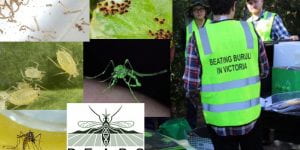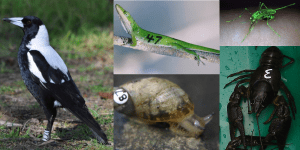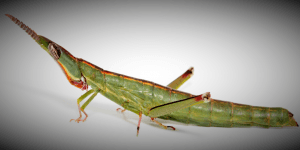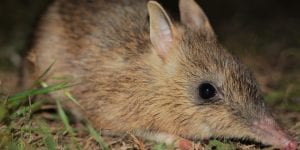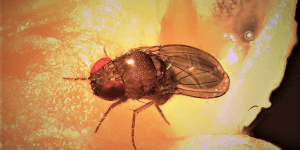Category: Research
-
MSc projects 2020 – Students wanted
We are seeking motivated MSc students to apply for several projects starting next year. Enquiries via pearg-queries@unimelb.edu.au Project 1/4: Exploring bacterial symbionts for agricultural pest control PEARG is researching ways to control important agricultural pests such as aphids and mites that cause millions of dollars in damage to crops each year in Australia. This project […]blogs.unimelb.edu.au/pearg/2019/06/14/msc-projects-2020-students-wanted
-
Cracking the kinship code: Measuring animal dispersal across generations with DNA
NEW paper! Dispersal is a key component of the ecology and evolution of animal populations. It allows animals to colonize new habitats, escape deteriorating conditions, and locate mates. When animals disperse and breed successfully in new habitats that are already occupied by the same species, there will be an exchange of genes. This exchange is […] -
Stowaway mozzies enter Australia from Asian holiday spots – and they’re resistant to insecticides
Original article published on The Conversation Words: Tom Schmidt, Andrew Weeks, and Ary Hoffmann We might not be able to use common insecticides to kill mosquitoes that arrive from other countries. from www.shutterstock.com Planning a trip to the tropics? You might end up bringing home more than just a tan and a towel. Our latest […] -
Collecting Rhynchosciara: an important fly in the history of genetics
Words and images: Ann Stocker Rhynchosciara species are endemic to South and Central America. The larvae are readily observed because they are a centimeter or more in length, usually reddish in colour and travel in groups of dozens to hundreds of individuals (Fig 1). However, they only came to the attention of biologists after Crodowaldo […] -
The diversity of Aussie grasshoppers | Part two
Words and images: Vanessa White Some important lessons learnt and new questions around Vandiemenella laboratory rearing In the previous grasshopper blog, I reported “reasonable success with room for improvement” in our attempts to rear Vandiemenella grasshopper nymphs in the laboratory. Alternative housing is an important focus for improvement, but a discussion with Mike and Ary […]blogs.unimelb.edu.au/pearg/2018/10/15/the-diversity-of-aussie-grasshoppers-part-two
-
The diversity of Aussie grasshoppers | Part one
Words: Vanessa White Images: Mike Kearney and Vanessa White Why Australian grasshoppers are fantastic research subjects: The Morabine grasshoppers (subfamily Morabinae) commonly known as “matchstick grasshoppers” are endemic to Australia and comprise 40 genera and around 250 species (Rentz 1996). Both sexes are wingless with a characteristic matchstick-like appearance. Some Morabine species have been studied […]blogs.unimelb.edu.au/pearg/2018/10/08/the-diversity-of-aussie-grasshoppers-part-one
-
Marking mosquitoes
Words: Mengjia Liu Images: Perran Ross and Mengjia Liu It is important to study the fitness of different colonies of Wolbachia-infected mosquitoes, and also of interest to test fitness effects within the same colony when mosquitoes are maintained under different conditions. As we have been maintaining uninfected mosquitoes under laboratory conditions for over 25 generations, […] -
BACK FROM THE BRINK | CROWDFUNDING FOR THE GENETIC RESCUE OF EASTERN BARRED BANDICOOTS
Words: Anne Aulsebrook Cover image: Mount Rothwell Conservation and Research Centre An article published in 1934 describes the flavour of bandicoot stew. ‘After chewing a mouthful I gave up.’ The writer states, ‘The stew tasted like roots. I have not sampled stewed bandicoot since.’ At the time of the article, bandicoots in Australia were already […] -
A new and unusual Wolbachia bacteria from Drosophila flies limited to the female sex
Words: Ary Hoffmann Cover image: Perran Ross As Wolbachia bacteria that live inside insect cells continue to be discovered and studied in detail, our appreciation of the diverse ways in which these bacteria interact with their hosts continues to expand. In past work we have found Wolbachia that cause embryo death when infected males mate […] -
New paper | Interspecific hybridization may provide novel opportunities for coral reef restoration
A new paper is out in Frontiers in Marine Science – article link A nicely digestible review of the article is available at Ocean bites here
Number of posts found: 65
